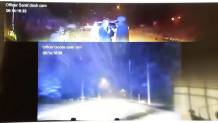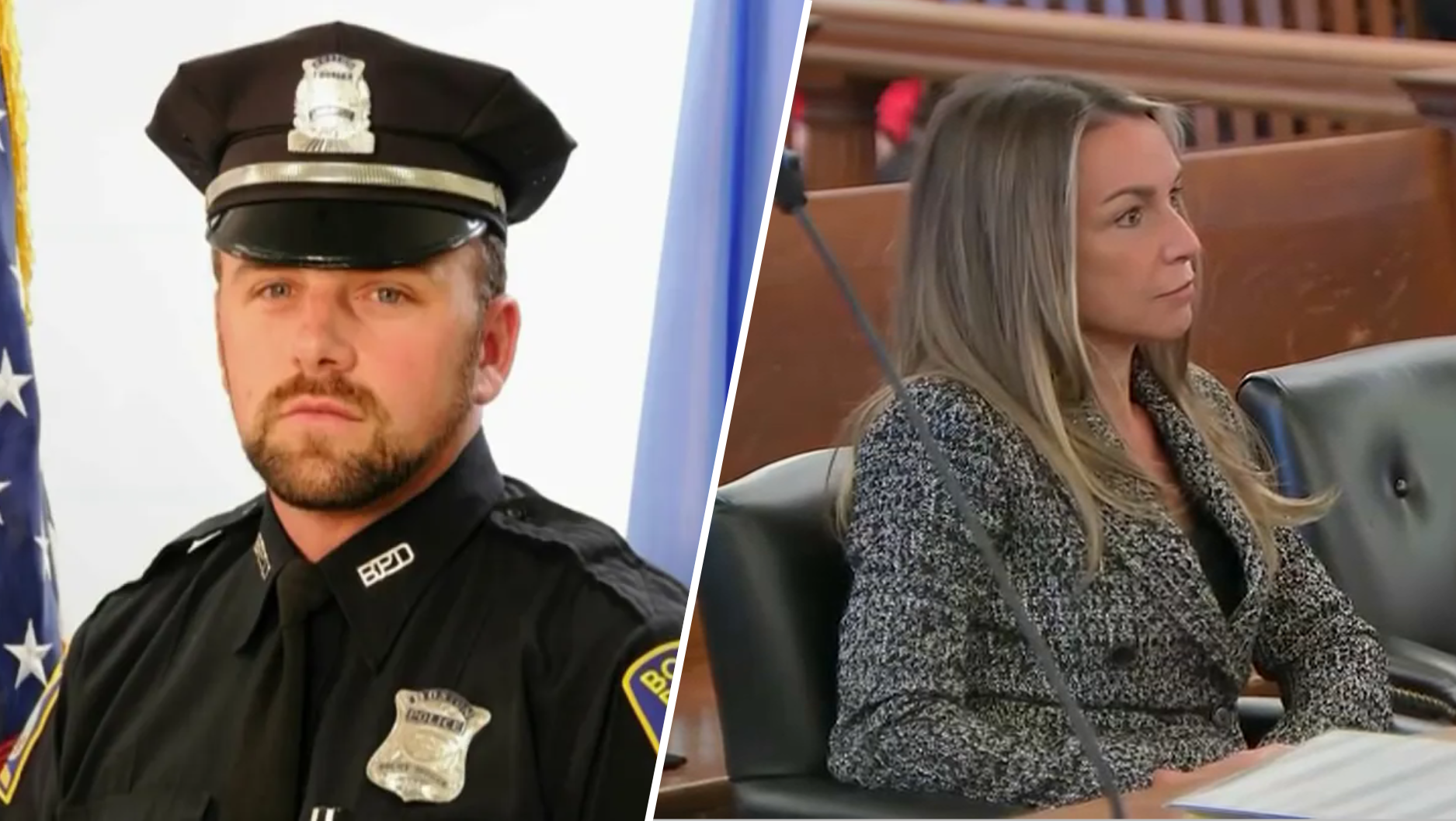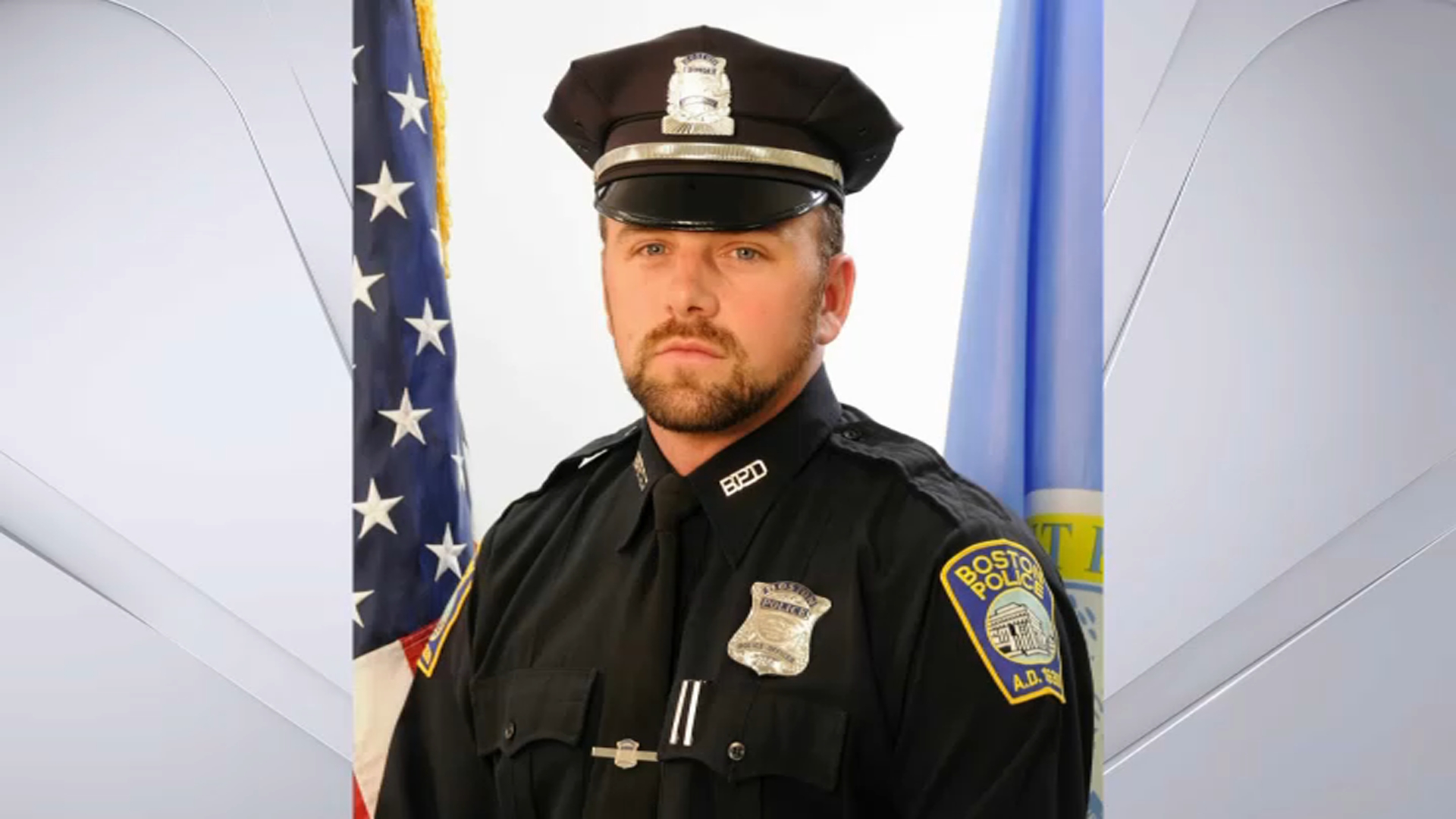Jurors in the Karen Read murder trial returned to a Dedham, Massachusetts, courtroom Monday for the second week of testimony in the controversial case.
Last week, jurors visited the scene where Read's boyfriend, Boston police Officer John O'Keefe, was found dead. The jury trip included a stop at the Fairview Road home in Canton, Massachusetts, where O'Keefe was found dead as well as the Waterfall Bar and Grill — the last place he was seen alive.
WATCH ANYTIME FOR FREE
Stream NBC10 Boston news for free, 24/7, wherever you are. |
Read is charged with second-degree murder in the 2022 death of her boyfriend. He was found in the snow outside fellow Boston Police Officer Brian Albert's home in Canton. Prosecutors say Read hit O'Keefe with her SUV, while Read says she has been framed in a wide-ranging coverup. Read has pleaded not guilty and is free on bond.
Get updates on what's happening in Boston to your inbox. Sign up for our News Headlines newsletter.
Watch the Karen Read trial live on nbcboston.com, NECN, NBC Boston streaming platforms (including Roku, Peacock and Samsung TV) and NBC10 Boston's YouTube page. Every night of the trial at 7 p.m., come back for analysis and more.
Email questions to canton.confidential@nbcuni.com.
Before heading out to visit sites from the case on Friday, jurors heard the conclusion of Thursday's testimony from Canton firefighter/paramedic Katie McLaughlin.
Specifically, defense attorney Alan Jackson grilled McLaughlin about her relationship with Caitlin Albert, Brian Albert's daughter. The two attended high school together, and Jackson referenced the fact that McLaughlin and Caitlin Albert are friends on Facebook and both appeared in photos from at least two beach trips.
McLaughlin acknowledged she has known Caitlin Albert for about 10 years, dating back to high school, but said they are not close friends. They do have mutual friends and have gone on day trips together in the past but McLaughlin said she has not discussed the case with her.
Katie McLaughin accused of perjury by defense
Prior to the start of testimony on Monday, defense attorney David Yannetti said new information came to light over the weekend showing that McLaughlin perjured herself.
He said McLaughlin and Caitlin Albert were more than just acquaintances, as they were both on the same high school track team and new photos emerged showing them together, including one at a baby shower in June of 2021, about eight months before O'Keefe's death.
"It's very clear that Katie McLaughlin perjured herself," Yannetti said.
He asked for a ruling on the admissability of the photos prior to Caitlin Albert taking the stand, which prosecutors said is expected happen sometime midweek. Judge Beverly Cannone said she will address the issue either Monday or Tuesday.
Canton Police Lt. Paul Gallagher testifies
The first witness to take the stand on Monday was Canton Police Lt. Paul Gallagher, who was in charge of preserving the crime scene where O'Keefe was found. He testified that he received a call around 6 a.m. on the day of O'Keefe's death from Sgt. Sean Goode, the police department's shift supervisor, telling him that O'Keefe had been found unresponsive in the snow.
Gallagher said he responded to the scene where O'Keefe was found on Fairview Road. By the time he arrived, he said O'Keefe was no longer at the scene. After receiving an update on the case from two sergeants at the scene, they decided to process the scene where O'Keefe was found.
He said there were at least 4 inches of snow in the area when he went over to where O'Keefe's body was found. He called it a "unique scene" due to the weather. He said there were some light pink spots in the snow, which might have been blood. He said they decided to process the scene with a leaf blower, in an attempt to blow the snow off the area in a "controlled fashion."
"I had never processed a scene in the snow," Gallagher said.
Prosecutors also showed a series of photos from the snowy scene, showing a broken glass and several pink spots, which Gallagher said were "frozen or coagulated blood." They were also shown a video of Gallagher operating the leaf blower at the scene.
After blowing some of the snow away, the cocktail glass and pinkish-reddish spots that Gallagher described as blood became visible.
"We were concerned with the weather destroying biological evidence at that time. We were trying to take the snow that had fallen over the blood. We were trying to remove it to expose the blood," he said.
Since the blood samples were frozen, Gallagher said investigators collected the blood samples in plastic cups, which were later turned over to state police.
Gallagher also testified about the examination of Karen Read's SUV, which prosecutors allege she hit O'Keefe with, and video of the vehicle being examined was shown to jurors.
Under cross examination, Jackson asked Gallagher if he wrote a report about his role in the case. He said he did not.
"The details matter in a case like this," Jackson said. "Accuracy is vital."
He asked Gallagher if he made any sort of diagram showing where the cocktail glass or blood evidence were discovered at the scene. Gallagher said he did not.
"We don't typically exercise that in our investigative unit," he said.
Jackson pointed out that where the glass and blood were found were estimates, or guesses, since no measurements were taken.
Gallagher also said he had never processed a crime scene in the snow until this one. He said this was the first time he had used a leaf blower at a crime scene. He also confirmed that the cups used to collect the blood evidence were red Solo cups provided by a member of the Canton Police Department who lived near the scene.
"We improvised," he said.
Jackson also asked Gallagher if he found a shoe or any pieces of broken taillight at the scene, evidence that was reportedly found at the scene later by investigators. Gallagher said he did not.
The defense attorney also displayed pictures of Read's SUV, focusing in on a dirty rag shown on the floor of the bay where the vehicle was being kept by police and a Stop & Shop grocery bag.
"That does not look like an evidence bag, does it?" Jackson asked. "Not a forensically stable item. Certainly not sterile."
He also showed a top view of a paper bag with six red Solo cups in it, containing what Gallagher confirmed were blood samples from the scene. Jackson asked if having the bag this close to the SUV is "a recipe for cross-contamination."
"It's not yes or no, but for your purposes, I would say yes," Gallagher said. He later explained under questioning from the prosecution that the evidence in the photos was being transferred over to state police investigators at that time, and the process was being overseen by a criminologist.
Canton Police Sgt. Sean Goode testifies
The day's second witness was Goode, the Canton police sergeant and shift supervisor on the day of O'Keefe's death. He took the stand just before the lunch break around 12:30 p.m.
Assistant District Attorney Adam Lally started by asking about police dispatch procedures and the difference between 911 calls.
Goode recalled receiving a 911 call from a woman around 5 a.m. asking if they had locked up anyone, because the person in question had been out with friends and didn't come home. He didn't know who the caller was at the time, but upon being called to Fairview Road later that morning, he learned that the 911 caller from earlier in the evening was from Kerry Roberts.
The prosecution then played the 911 call from Roberts, who could be heard saying "My friend's boyfriend didn't come home last night." Goode can be heard on the call saying they hadn't locked anybody up.
A second 911 call from Jennifer McCabe about an hour later was then played. This call was more frantic. Goode asked if anyone can do CPR, and McCabe could then be heard whispering, "I think he's gone." An ambulance with siren could be heard arriving in the background.
After the lunch break, Goode returned to the stand, with Lally playing the sergeant's police cruiser dashcam footage showing his response to the scene on the day of O'Keefe's death. The footage shows him arriving and Read and several others at the scene.
"It was a chaotic scene. People were just walking in and out," Goode said.
He said he spoke with McCabe and Read at the scene. He said the wind was howling so loudly that it was difficult to hear what people were saying. He described Read as "confused, hysterical, in shock" and said she was yelling out, asking if O'Keefe was dead.
Goode said he then brought Read into the back of the police cruiser and asked her if she had driven there, to which she responded, "I think so."
He went on to describe why Read was eventually hospitalized under what's known as a Section 12 — her father relayed to police that she was frantic on the phone and wanted to end her life.
Goode testified about going into the house to investigate: "We have no idea why John O'Keefe is laying on the front lawn of the house … we need to figure out what happened last night, that night." He had never been in the house, he said; he looked into the dining room while talking to Brian and Nicole Albert.
When Gallagher arrived, Goode testified, the lieutenant said the scene needed to be sealed off and came up with the idea to use a leaf blower because the snow was falling so fast. Goode said that he "shot back to my residence and grabbed my own" after five or seven minutes, and that, by using it, they revealed blood and shards of a drinking glass.
After that, it was the defense's turn to question him, and Yannetti started by establishing several facts: that he went to school with sister-in-law of one of the Alberts as well as the sister of Michael Proctor, the lead state police investigator at the scene, and that he's familiar with the Albert family, and has been friends with Kevin Albert.
They discussed the fact that Canton police recused themselves from the investigation at some point — Goode said he'd finished his paperwork when he was told, though he noted that, given that O'Keefe died, state police would handle the case, his first homicide case, regardless.
Yannetti then turned to Brian Higgins, an agent for the U.S. Bureau of Alcohol, Tobacco, Firearms, and Explosives who was reportedly at the Fairview Road home the night before O'Keefe was found dead and a friend of Brian Albert. Higgins worked out of the Canton police department, Goode testified, in a unique arrangement.
While Goode was on duty the night O'Keefe was killed, he saw Higgins enter the police station about 1:30 a.m., Goode testified. He didn't know why he was there or where he was coming from, but said it wasn't unusual to see him at 1:30 in the morning on a weekend and wasn't sure how long he was at the station.
Yannetti jumped ahead to Goode's response to the home on Fairview, which they established the officer knew belonged to Brian Albert — he'd been there before, for a police report with now-Lt. Michael Lank.
Yannetti asked if Goode examined the cellar of the home — a significant unanswered question in the defense's theory of the case — and Goode confirmed he never examined it.
He agreed it was a chaotic scene and that Read appeared to be in distress, screaming by the time he got to the home. He also said he never heard her say "I hit him."
Goode recalled officers scouring on the ground for evidence with the help of the leaf blower and investigators' hands and feet, looking for "anything" while they work, though, when pressed, noted they didn't find the pieces of Read's broken taillight that would later be found at the house or O'Keefe's missing shoe.
Goode also said, when asked, that no officer guarded the crime scene for hte two hours they were there, and that there was no protocol for putting up a tent to keep the scene from the elements.
Yannetti also asked about two apparent omissions from Goode's report: Brian Albert's name was the only one not spelled out in the report, and Higgins' address was listed as that of the Canton Police Department.
"Did you omit Brian Albert's first name to mask the fact that he was involved" Yannetti said.
"No," Albert replied.
When asked why Higgins' address was given as the 1492 WAshington Street, he said, "I dunno."
That ended up being Higgins' last set of questions for the day.
Lt. Michael Lank interviewed without jury
After the jury was excused for the day, the defense and prosecution took turns questioning Lank in a process known as voir dire — Cannone will rule on whether his background, which was a subject of the conversation, may be discussed during his testimony.
Lank was questioned by Jackson, saying he knows Tim and Chris Albert from childhood, and that he has a civil relationship with Brian Albert. They went through an altercation involving Chris Albert and a pair of brothers about two decades ago that led to punches thrown and criminal and civil proceedings over the brothers' allegations that Lank assaulted the brothers.
That case was settled; he testified in the criminal case.
While the incident began Albert "approached my vehicle and stated that he had been in an altercation earlier in the night with one of the" brothers, Lank testified later that "it had nothing to do with it being Chris Albert," and that he would have conducted himself the same way with someone else.
Jackson also asked about a hit-and-run case involving Tim Albert, who, Lank testified, he traced from the scene of a crash to the Fairview home outside of which, years later, O'Keefe's body would be found. Lank and his partner interviewed Albert, but didn't conduct a breathalyzer or field sobriety test.
"We spoke with him and he gave an explanation," Lank said, agreeing it was something to the effect of him being sorry and panicking. They would later charge him with a misdemeanor, he recalled.
After Lank was excused, Jackson said the experience of Lank's "shows how long they've been involved with each other … how deep the ties run" between him and the Albert family, and that jurors should be able to weigh the fact that Lank was "the very first officer to walk in that front door," where he knew he would find the homeowners and possibly other witnesses, and interviewed them without recording it.
For the prosecution, Lally said "there is no actual relevancy to any of this," creating a "trial within a trial." But Cannone said she disagreed, though she wanted to review police reports from one of the cases before ruling.
Following Friday's jury site view, the first witness to take the stand was Greg Woodbury, a lieutenant/paramedic with the Canton Fire Department. Like the other firefighters and paramedics who have taken the stand previously, he testified about his recollection about the response to O'Keefe's death back in January of 2022.
Woodbury described Read's demeanor when emergency personnel arrived at the scene, saying she appeared "very distraught, very upset" and was resistant to the idea of being taken to the hospital for a psychiatric evaluation, saying she didn't need any assistance.
Around 2:30 p.m., another Canton firefighter/paramedic, Daniel Whitley, took the stand. Like the other firefighters before him, he testified about the snowy weather on the night of the response and what he saw when he arrived at the scene. He also testified about Read's demeanor and attempts to get her to agree to be taken to the hospital.
He also detailed Read's behavior in the ambulance on their way to the hospital and upon arrival at the hospital.
"She was giving the nurses a hard time," Whitley said, noting that Read didn't want to wear a hospital gown or give a urine sample.
Canton firefighter/paramedic Jason Becker was next up to testify, and also spoke of the initial response to the scene and how Read was distraught. She reportedly told Becker that she had just performed CPR on O'Keefe, and had blood on her face, around her mouth and on her neck.
Watch Karen Read trial Day 3 testimony (May 2, 2024)
During a half day of trial Thursday, one line of questioning that both the prosecution and defense followed with each witness involved was what they heard a distraught Read say at the scene of the incident.
The first responders testified to hearing Read say different things amid the emergency response for O'Keefe: "I hit him, I hit him," "He's dead, he's f***** dead," "Is he alive?" and, repeatedly, "I hit him."
When Read was indicted by a grand jury on a second-degree murder charge in June, prosecutors said in court that Read told a Canton firefighter/paramedic at the scene, "I hit him, I hit him, I hit him, I hit him."
The first witness called on Thursday was Canton fire Lt. Anthony Flematti, who'd begun his testimony on Tuesday afternoon. He was one of the first responders to the scene of O'Keefe's death.
Lally asked Flematti about his arrival at the scene, standard department operating procedures and the weather on the night O'Keefe's body was found. He also described seeing three women at the scene in addition to O'Keefe.
He said O'Keefe's body was covered by 4-6 inches of snow when he arrived, and O'Keefe was underdressed for the weather in a long-sleeve T-shirt and jeans. A previous witness earlier in the week had testified that O'Keefe was dressed for the weather.
Flematti said as he and other firefighters and EMTs arrived at the scene, he began speaking to Read to find out what might have transpired. He said he spoke to her first because she seemed to be the one most distressed. He said she was attempting to perform CPR but her behavior was erratic.
"We tried to get any type of information we could from her at that time, with no luck," he said. "The only response I was given was, 'I hit him, I hit him, oh my God I hit him.'" He said Read's comments were very loud, and she didn't answer his additional questions, only repeating, "I hit him, I hit him."
Jackson then cross-examined Flematti about Read's response to his questions on the night of O'Keefe's death, focusing specifically on how the fire lieutenant moved Read over to speak with a different firefighter after he refused to get any answers from her.
Around 10:15 a.m. Thursday, Jackson was about to show dashcam video from the night of the incident so that Flematti could show him the portion where he was having a discussion with Read, but Cannone wanted to view it first, ordering the jurors out of the room.
Following a recess, Jackson began showing the dashcam footage, a still image of which can be seen below:

The footage showed multiple people moving about, and first responders attending to O'Keefe. But Flematti struggled to identify any of the people in the dashcam video — including himself — because the video was at least partly obscured by the weather conditions.
Jackson showed a portion of dashcam video showing the ambulance doors being closed, and asked Flematti if he was inside the ambulance at that point. Flematti said he was in the ambulance at some point, but couldn't confirm he was inside the ambulance the entire time, saying he might have exited the vehicle to collect equipment.
The defense attorney appeared to be trying to get Flematti to confirm that he was inside the ambulance and thus wasn't part of the group of first responders speaking with Read outside.
Jackson also pointed out during cross-examination that nowhere in his reports did Flematti mention to investigators or doctors that he believed Read had told him O'Keefe might have been hit by a vehicle.
"It would have been important yes," Flematti acknowledged. "It's not in the reports, no."
During redirect, Lally asked Flematti again about the conversation Flematti said he had with Read where she reportedly told him, "I hit him." Lally noted, and Flematti confirmed that the interaction occurred when Flematti first arrived at the scene.
The second witness of the day, Canton firefighter/paramedic Matthew Kelly, was called around 11:20 p.m. He was also one of the first responders to the scene of O'Keefe's death.
Lally began by questioning him about his work history and training, and the route he took to the scene.
He described seeing a frantic woman screaming, at least twice, "He's dead, he's f***** dead."
On cross-examination, Yannetti asked Kelly about what he saw at the scene, including confirming that O'Keefe had one shoe on, whose matching pair he didn't see, and about standard procedure when responding to incidents.
After confirming that he never heard Read say, "I hit him," Yannetti played video from a police cruiser's dashcam. On it, Kelly said, "I heard someone say, 'f***** dead.'"
Lally returned to ask more quesitons of his own, establishing that it wasn't clear to Kelly he was at the scene when the video Yannetti showed was taken. The prosecutor also confirmed with Kelly that he and his team weren't always together, so they may not all have heard what others heard.
Firefighter/paramedic Francis Walsh was next on the stand and recalled driving to the scene in very poor weather conditions. He didn't speak with the civilian women at the scene, but heard one screaming and crying. All he recalled hearing her saying was, "Is he alive?"
The last witness called Thursday was firefighter/paramedic Katie McLaughlin, who recalled being asked to talk to the women to find out what happened. Read answered some of the questions, but was distraught, and repeated, "I hit him."
Another woman said, "You're hysterical, you need to calm down," while an officer nearby said, "You what?" according to McLaughlin. Read repeated the phrase, and the police officer said, "Get Goode down here," which she took to mean a police sergeant.
The day's testimony ended in the early afternoon — Thursdays are half days in the trial.
The trial is expected to last up to eight weeks, with full days on Mondays, Wednesdays and Fridays, and half days on Tuesdays and Thursdays.




